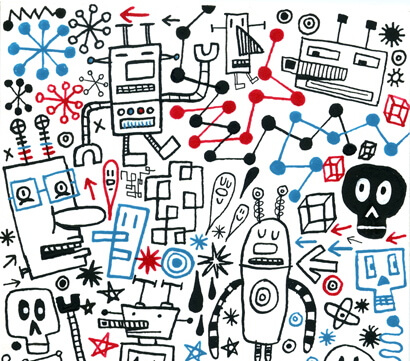Yoky Matsuoka’s first foray into robotics wasn’t within the confines of an academic lab, where she once constructed one of the most life-like mechanical hands ever conceived, but on a tennis court many years ago. A rising star player at the time, Matsuoka dreamed of creating a mechanical training buddy capable of pushing her performance. Matsuoka is still heavily involved with robotics today, but not with the kind she first envisaged. Rather, she is dedicated to building stealthy, intelligent robots that are tucked away in people’s homes.
In 2010, Matsuoka became the VP of Technology at Nest, the automated energy-saving thermostat and smoke detector company recently acquired by Google for $3.2 billion. Nest’s thermostat is a perfect example of a modern robot, one built to serve a specific function or task. Matsuoka calls matching a well-defined need with a suitable action “finding structure within an unstructured environment.” Robots, then, are meant to enhance one aspect of life where humans struggle – in the Nest thermostat case that means dynamically controlling temperature (and energy use) in a home – as opposed to replacing the complex decision-making at which humans still excel.
“Everyone has a thermostat – it’s ugly as hell,” recently Matsuoka told a gathering of robotics entrepreneurs and investors. And so aside from building a fully functional robotic device, Nest spent a great deal of time mastering the aesthetics of the product itself. Think of it as an amalgam of Google and Apple philosophies. Or as Matsuoka puts it, Nest’s beautiful exterior covers the geeky inside parts.
Matsuoka found that a ninety-percent success rate is not good enough for robots in the home. For instance, consider a smoke detector driven by intelligent sensors. Even one false alarm can cause consumers to remove the batteries or otherwise disconnect the device. This is dangerous because we know that 73% of fatalities in house fires occur because homes do not have working detectors. But again, by finding that slice of structure in the unstructured environment of a home, in this case detecting smoke and carbon monoxide levels and then offering a set of automated responses, Nest can raise success rates/valid alarms to the highest levels.
Before assuming her latest responsibilities at Nest, Matsuoka co-founded Google X, the search giant’s semi-secret skunk works operation located a half-mile from the main Googleplex campus. Here, projects such as the autonomous car, led by researcher Sebastian Thrun, utilized different types of robots to navigate city streets and highway lanes.
No question there are many aspects of automated driving that prove difficult, but Matsuoka explains that most driving functions on the road are surprisingly structured and thus well suited to machine intelligence. “With the right set of sensors,” she says, “[automated cars] are indeed able to drive consistently, following the rules with 99.99% accuracy.”
But as the road becomes more difficult to navigate, the performance of the robotic system begins to breakdown. “If something gets thrown right in front of you,” Matsuoka said, “you have to quickly decide if it’s a bush or a baby, and then whether to slow down or keep going to be safer.” And that type of complex, unstructured choice is difficult for a robot.
Today’s personal robots may look nothing like what we imagined, yet their micro-functions and societal impacts have nonetheless blossomed. From thermostat regulators to automated cars to intelligent hearing aids that cut out background noise, robotic systems that focus on solving a well-defined problem are proving to be the most successful technologies.
As Matsuoka says, by 2032, the average household will spend $47,000 per year on energy, nearly half of which will be from heating, ventilation and air conditioning. Even if Nest chips away just a fraction of wasted energy with its constant attention to temperature and activity in a household, its customers stand to save money. Consumers could try to rack up lower energy bills by regulating thermostats on their own, but that would be difficult for even the most resolute homeowner.
Matsuoka never realized her tennis buddy robot. But in a way, she’s stumbled upon an even bigger challenge: building systems that follow through when human behavior – perhaps the most unstructured of all system inputs – fails.
- a16z Podcast: The Art of the Regulatory Hack
- a16z Podcast: On Corporate Venturing & Setting Up ‘Innovation Outposts’ in the Valley
- a16z Podcast: Connectivity and the Internet as Supply Chain
- a16z Podcast: Infrastructure… is Everything
- a16z Podcast: Open vs. Closed, Alpha Cities, and the Industries of the Future



